Burying the dead in Toraja, Indonesia
-
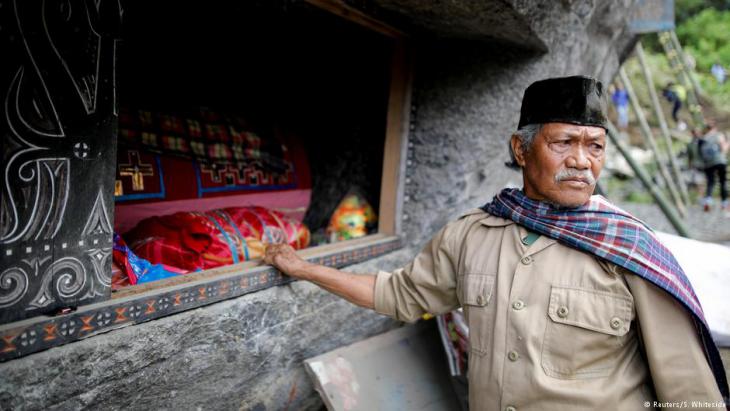
The ancient Torajan burial ritual is also known as "Ma'nene", in which clans visit the tombs of deceased family members, clean their remains and replenish the coffins with personal belongings -
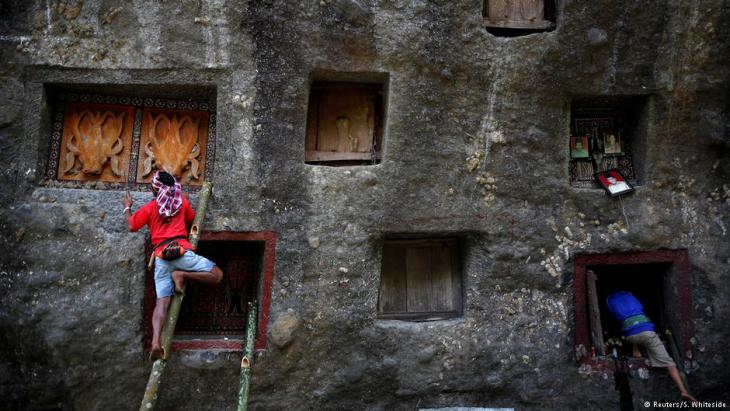
The boulders can be as high as a three-storey building and each tomb can take between three to six months to carve -
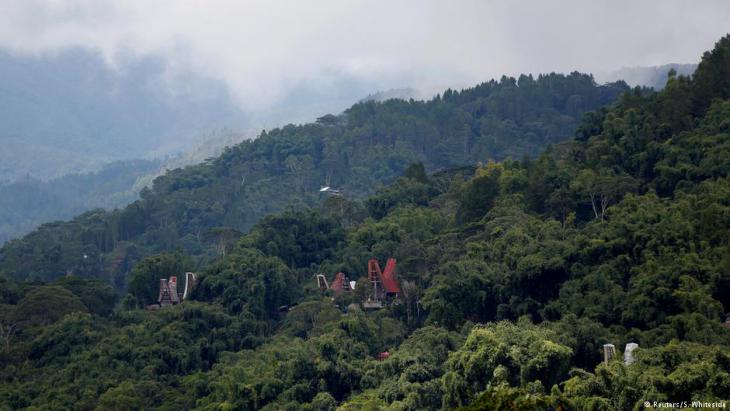
View of the tomb landscape of Toraja: animistic beliefs are widely practiced in Indonesia - with a population of 250 million, the country is predominantly Muslim, yet is also home to minority groups which espouse Hinduism, Buddhism and traditional beliefs -

The deceased are mummified and housed in ornate, colorful coffins and spend several months or even years in their own homes before receiving a funeral and burial. Relatives talk to the deceased, offer them food and drink and involve them in family gatherings, as if they are still alive -
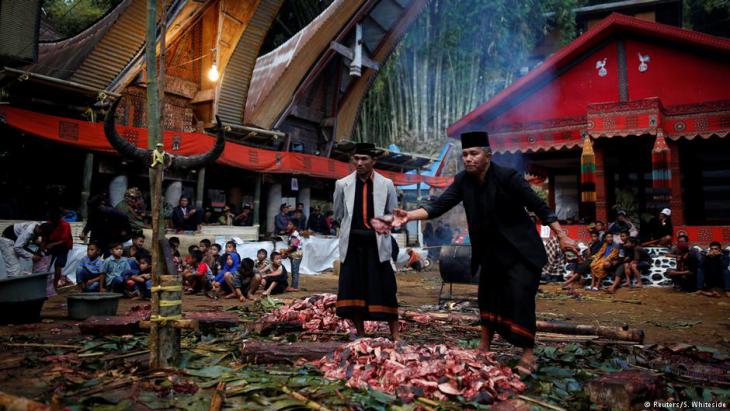
Once sufficient family members can attend and money is available to pay for sacrificial buffaloes and pigs, a funeral ceremony, known as 'Rambu Solo', is held, with the whole village usually invited to a feast celebrating communal ties -
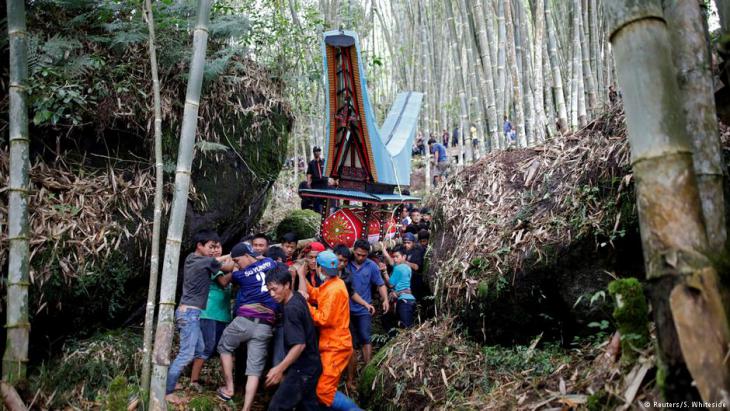
Family members shed tears for their dead as the coffin is carried in a chaotic funeral procession to the burial site -

Mourning the dead: the coffins - painted in bright reds and ochres - are stuffed with clothes and personal effects and placed in narrow tombs carved into monolithic rocks that pepper the mountainous region -
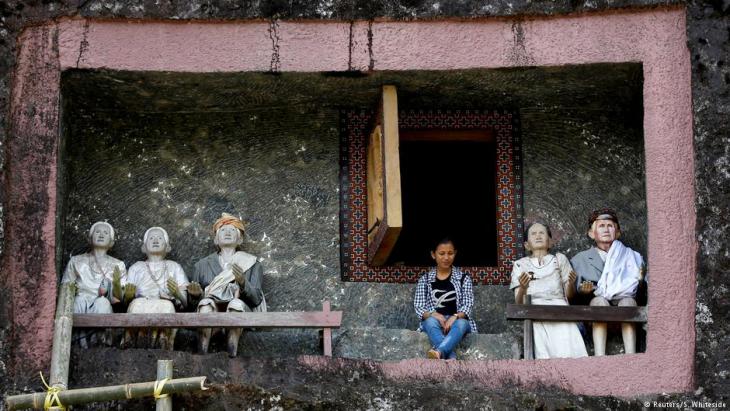
Keeping the tradition alive for future generations: Renolt Patrian, a 21-year-old studying to be a mining engineer sees this as an important responsibility. "When I have a job and earn money, I will not give up the tradition," he said after visiting his great-grandmother who died last month in the family home -
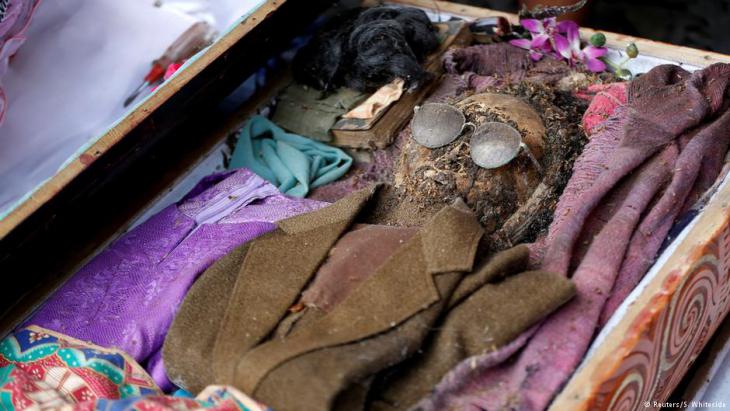
Mummified remains of a man revealed during the opening of a coffin by relatives at Loko'mata, an ancient Torajan burial site, during the Ma'nene death ritual near Rantepao (North Toraja) on Sulawesi
https://qantara.de/en/node/25563
Link
To all image galleries